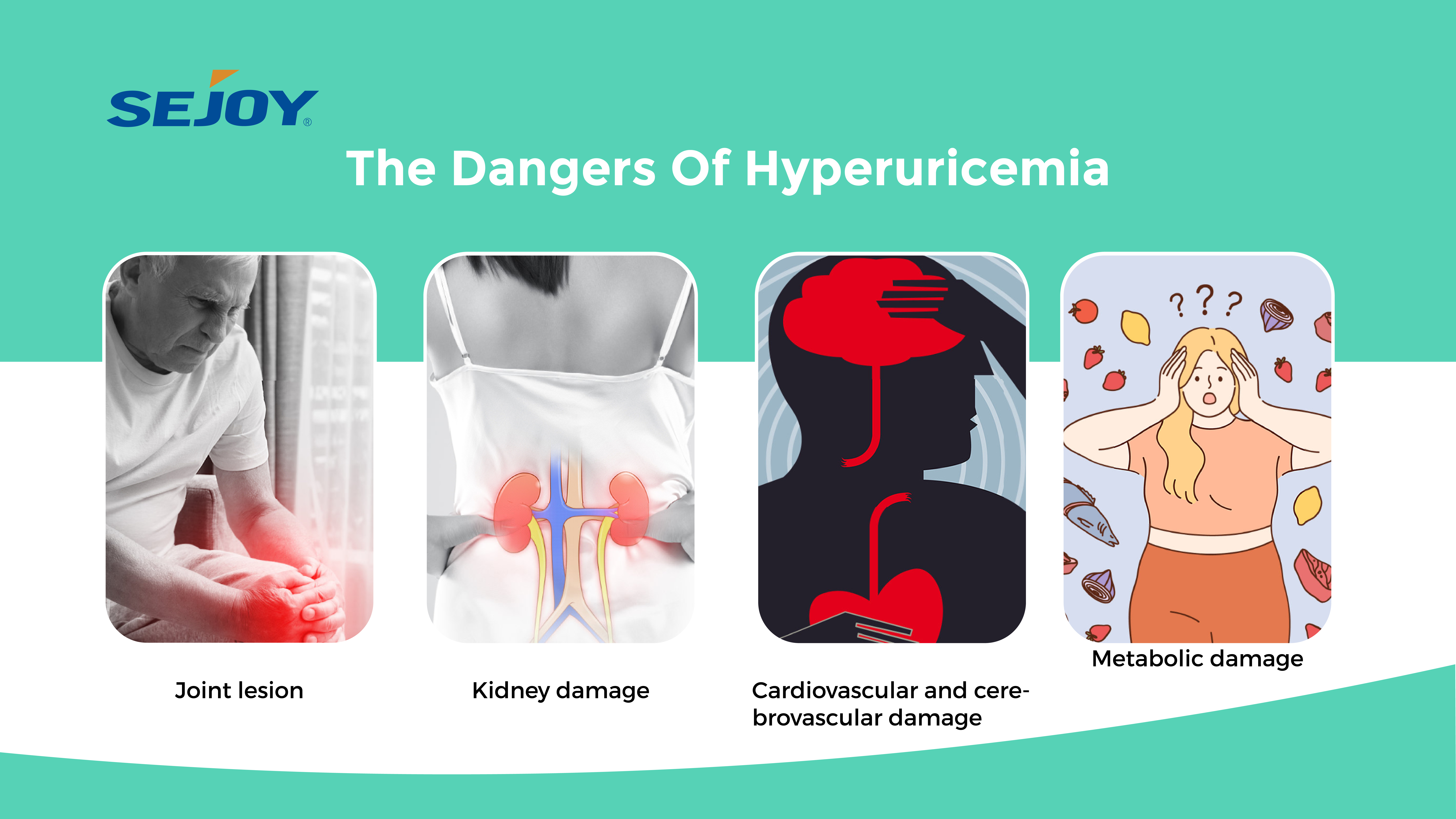High uric acid
With the continuous changes in people’s lifestyles and dietary structures, the incidence of hyperuricemia is on the rise year by year. Hyperuricemia refers to the condition where an adult’s fasting blood uric acid level is greater than 420 μ mol/L under a normal purine diet, not twice on the same day. Hyperuricemia is a metabolic related disease. Long term exposure to hyperuricemia can not only cause gout, but also damage various organs in the body. So what other hazards can hyperuricemia cause?
1. Joint damage
Gouty tophi can form sodium urate crystals and deposit in the joint area when the blood uric acid in the body exceeds its saturation in the blood or tissue fluid, inducing local inflammatory reactions and tissue damage, known as gout. Gouty tophi are a characteristic clinical manifestation of gout, which are raised yellow white growths of varying sizes, ranging from sesame seeds to eggs. They are commonly found in joints such as the auricle, metatarsophalangeal, fingertip, metacarpophalangeal, elbow, Achilles tendon, patellar bursa, etc. Chronic arthritis: Joint inflammation recurs for a long time and enters the chronic stage. Joint symptoms are not easy to completely disappear, causing joint bone erosion, defects, and fibrosis of surrounding tissues, resulting in joint stiffness, deformity, limited mobility, and can rupture to form fistulas. On the basis of chronic lesions, acute joint inflammation can still recur, causing the lesions to become increasingly severe and deformities to become more prominent, seriously affecting joint function. Finally, it leads to joint disability.
2. Kidney damage
Gouty nephropathy has a insidious onset, with only intermittent proteinuria in the early stages. As the condition progresses, renal concentration function may be impaired, nocturia may increase, and renal dysfunction may occur in the late stages, manifested as edema, hypertension, elevated blood urea nitrogen and creatinine. Patients with partial hyperuricemia and urinary tract stones have uric acid stones in their kidneys. Small sediment like stones can be excreted with urine without obvious symptoms, while larger ones often cause symptoms such as renal colic, hematuria, and urinary tract infections. When stones cause obstruction, it can lead to hydronephrosis, perirenal infection, renal abscess, and in severe cases, acute kidney failure.
3. Cardiovascular and cerebrovascular damage
Uric acid salts can deposit in the endocardium, valves, and other areas of the heart, forming gouty stones. Uric acid deposition in blood vessels stimulates blood vessel walls, damages endothelial cells, promotes inflammatory reaction, attracts platelet and lipid aggregation, and leads to atherosclerosis, hypertension, cardiovascular and cerebrovascular diseases.
4. Metabolic damage to the body
Hyperuricemia can damage pancreatic beta cells, leading to decreased pancreatic beta cell function and disrupted glucose metabolism; High uric acid can affect lipid metabolism and lead to hyperlipidemia. Hyperuricemia is one of the important indicators of metabolic syndrome. Hyperuricemia patients have significantly increased risk of metabolic syndrome, including obesity, diabetes, hyperlipidemia, etc.
Hyperuricemia poses significant risks, and controlling uric acid should not be underestimated. Once elevated blood uric acid levels or related symptoms are detected, it is important to seek specialized medical attention as soon as possible to assess the condition, establish control goals, and prevent further organ damage.
uric acid analyzer, uric acid monitor, uric acid test
Post time: Sep-20-2024



